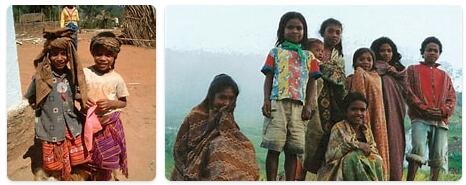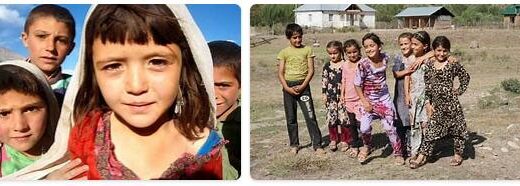Iran 2014
Yearbook 2014
Iran. The breakthrough in the negotiations on Iran’s nuclear program reached at the end of 2013 led to the presentation of a “joint action plan” in January. Behind the plan was the so-called P5 + 1 group (the five permanent members of the UN Security Council plus Germany), and the purpose was to ensure that Iran did not acquire nuclear weapons capability. Work at a couple of uranium enrichment plants was discontinued and uranium centrifuges began to be dismantled under the supervision of the International Atomic Energy Agency (IAEA).
In exchange, Iran received some relief from trade sanctions as well as incremental payments of frozen assets. It provided a respite for Iran, whose economy was severely strained by the sanctions and the falling world market price of oil.

Iran population in 2020 is estimated at 83,992,960. Negotiations between P5 + 1 and Iran were conducted in several rounds. The deadline for the interim agreement set for July ran without concrete results, although the IAEA reported some progress. When the next deadline expired on November 24 – on the day one year after the historic first agreement – the parties announced that they had made “significant progress” but needed additional time to reach port. A new date was mid-year 2015. What progress consisted of – or what the stumbling blocks in the negotiations were – was not revealed.
Also in the balance regarding relations to the outside world was the regional instability that increased significantly during the year as a result of the Sunni Muslim jihadist group Islamic State’s (IS) advance in Iraq and Syria. Shi’ite Muslim Iran perceived IS as a serious threat, and the country suddenly had a common enemy with the United States. It emerged in the fall that US President Barack Obama wrote several letters to Ayatollah Sayyed Ali Khamenei proposing cooperation with IS, provided a nuclear technology agreement could be reached. In December, the government confirmed that the Iranian Air Force carried out an attack on IS in Iraq, in support of Iraq’s military. However, all cooperation with the United States was rejected.
At the beginning of the year, signals of relief came in restrictions for several government critics, some of whom interpreted signs of a more tolerant social climate following President Hassan Rohani’s take-over in 2013. Among other things, former presidential candidate Mehdi Karroubi was moved to house arrest in the home, instead of in a state facility. But gradually the hopes of increased openness faded. Among several cases that attracted attention abroad were the execution of a murdered 26-year-old woman in October. The woman had, according to her own statement, defended herself against a rape attempt when she stabbed a man to death. A lot of attention also aroused a verdict on conditional imprisonment and 91 lashes at six youths after posting a video online where they dance to a song.
According to topb2bwebsites, President Rohani’s difficulties became apparent when Parliament deposed a minister with the politically sensitive responsibility for research and higher education in August; the regime is closely monitoring what is happening at the universities. Minister Reza Faraji Dana was accused of having hired too many people linked to the protests in connection with Mahmoud Ahmadinejad’s re-election in 2009, and to have students who were suspended from teaching return. President Rohani then nominated two new candidates in succession, both of whom were rejected by Parliament, also citing that they had ties to the “insurgency” in 2009. Finally, in November, Parliament approved a new minister.
August
Production of diabetes medicine starts
31 August
The Danish pharmaceutical company Novo Nordisk inaugurates new insulin production at its Iranian subsidiary. The production line was announced in 2015, when it was also said that it would take five years before it could be taken into use. The sanctions against Iran that the United States has since reintroduced are technically no barriers to medicines for Iranians, but in practice problems arise because banking companies do not dare to make transfers of money (such as payments for product ingredients) to or from Iran for fear of punished by the United States.
UN inspectors may inspect desired locations
August 26th
Inspectors from the International Atomic Energy Agency (IAEA) will be allowed to visit two places in Iran where the organization wants to take soil samples, among other things. Iran has opposed the wishes for several months. Exactly which sites are in question is not disclosed, but these are places where there may have been nuclear activity, probably before the JCPOA agreement concluded in 2015 that Iran would avoid international sanctions in exchange for restrictions on the nuclear program. On September 30, it is announced that the IAEA has been granted access to both sites, but analysis of sampling is expected to take several months.
US play is blocked at the UN
August 25th
The UN Security Council continues its disagreement over the international agreement on Iran’s nuclear program from 2015, which the United States left in 2018. Despite its decision to withdraw from the agreement, the United States claims its right to use an agreement clause (supported by UN Resolution 2231: Security Council) which makes it possible to enforce new sanctions against Iran. But 13 out of 15 members of the Security Council oppose the United States. One week earlier, the United States had also tried in vain to get a hearing for an indefinite extension of a UN embargo on Iran banning conventional weapons, which is due to expire in October.
New robots with a longer range
20th of August
Iran presents two new domestic robots with extended range. One is ballistic, the other is a cruise robot. Both have been named after people killed by the United States in Baghdad earlier this year (see January 3).
Fishermen lose their lives in confrontation
August 17th
Two Iranian fishermen lose their lives when the United Arab Emirates’ coast guard opens fire on a fishing fleet. Iran seizes an Emirati ship, seizes the crew and protests through the emirate’s chargé d’affaires. Diplomatic relations between the two countries have been downgraded since 2016, and a recent reason for increased tensions is the emirate’s decision to recognize Israel.
War of words about Israel
August 15th
Iranian President Rohani criticizes the United Arab Emirates’ decision to normalize diplomatic relations with Israel. Rohani describes it as a “big mistake” and warns of opening the way for Israel in the region. This prompted the emirate, which sees his statements as a threat, to file a protest note to Iran.
Pirate hostage free after five years
August 15th
Three Iranian fishermen held hostage by pirates in Somalia for five years regain their freedom. Their ships were taken over by pirates in March 2015. According to the Hostage Support Program (HSP) in Nairobi, the three Iranians were the last to be held hostage by Somali pirates. HSP, which was involved in the negotiations, sees the release as the end of a ten-year era of kidnappings at sea. In total, more than 2,300 seafarers have experienced captivity in Somalia, either on board their ships or brought ashore. However, the release does not mean the end of disagreements over fishing between Somalia and Iran; crews from Iran are accused of fishing illegally in Somali waters.
The United States seizes oil from Iran
August 14th
The United States has seized four cargo tanks of Iranian gasoline that are said to have been on their way to Venezuela, reports the Wall Street Journal. The transports are linked to the Revolutionary Guards in Iran, which the United States has branded as a terrorist group. The ships are not Iranian, but people connected to the Revolutionary Guards who organized the oil deal are believed to have used bulwark companies to circumvent US sanctions against Iran. The United States also maintains sanctions against Venezuela. In October, the United States announced that the fuel from the cargoes had been sold for just over 40 million dollars, of which “a significant part” will go to a US fund for terrorist victims.
BBC: Iran “darkens” corona infection
August 3
There are data indicating that Iran’s real death toll in the corona pandemic is almost three times as high as the official one, reports the British BBC’s Persian-language editorial office. By July 20, nearly 42,000 Iranians are said to have died in covid-19, according to this information, against just over 14,400 officially. The BBC’s healthcare sources also have information that the first death was found as early as January 22, almost a month before authorities confirmed to the outside world that the infection had reached Iran.
Strike wave in heavy industries
1 August
Strikes are beginning at energy facilities in a number of provinces, especially in the south. Electricity, oil and gas production are affected, and employees in the mining industry and transport join. The campaigns cover more than 10,000 employees and are thus among the largest in decades. But they seem to be specifically about working conditions, including wages that have been reduced or not paid and heavy working conditions in the summer heat.


